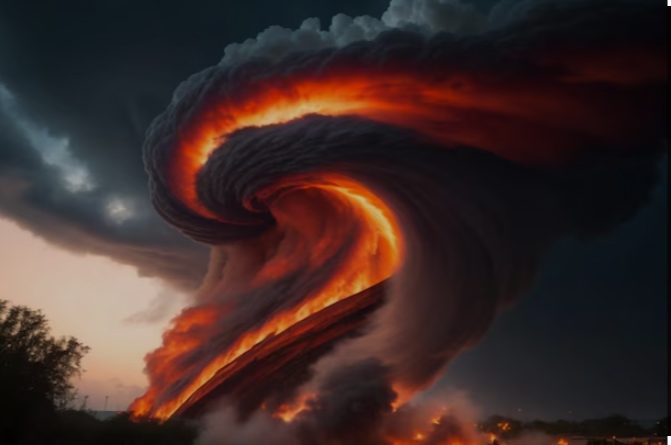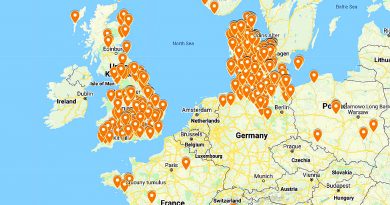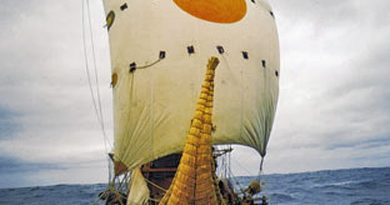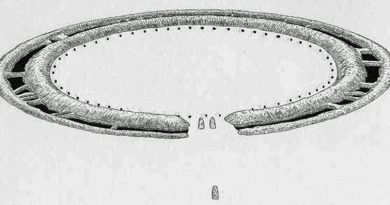Mythological Dragons – a non-existent animal that is shared by the World.
A dragon is a legendary creature, typically with serpentine or reptilian traits, that features in the myths from many cultures. According to our popular history books, dragons are two distinct cultural traditions: the European dragon, derived from folklore and ultimately related to Greek and Middle Eastern mythologies, and the Chinese Dragon, with counterparts in Japan, Korea and other East Asian countries. However, there are also Mythological Dragons in Central America and Africa, which are not as well known.
But how can these groups of people separated by tens of thousands of miles dream up a ‘non-existent’ creature with the same look and features?
Dragons appear in Wales, England, Greece, Slovakia, Indian, Persia, Asia Minor, Japan, China, Vietnam, and Australia and let us not forget (like the history books) Mexico, Central America, Ethiopia and Egypt.
This places dragons on every continent in the World!
The association of the serpent with a monstrous opponent overcame by a heroic deity has its roots in the mythology of the Ancient Near East, including Canaanite (Hebrew, Ugaritic), Hittite and Mesopotamian. Humbaba, the fire-breathing dragon-fanged beast first described in the Epic of Gilgamesh, is sometimes described as a dragon with Gilgamesh playing the part of a dragon-slayer. The legless serpent (Chaoskampf) motif entered Greek mythology and ultimately Christian mythology, although the serpent motif may already be part of prehistoric Indo-European mythology as well, based on comparative evidence of Indic and Germanic material.
Although dragons occur in many legends around the World, different cultures have varying stories about monsters that have been grouped under the dragon label. Some dragons are said to breathe fire or be poisonous, such as Beowulf’s Old English poem. They are commonly portrayed as serpentine or reptilian, hatching from eggs and possessing typically scaly or feathered bodies. They are sometimes described as hoarding treasure. Some myths portray them with a row of dorsal spines. European dragons are more often winged, while Chinese and African dragons resemble large snakes, while Central American Dragons have feathers. Dragons can have a variable number of legs: none, two, four, or more regarding early European and African literature. (Mythological Dragons – a non-existent animal that is shared by the World)

Dragons are often held to have major spiritual significance in various religions and cultures around the World. In many Asian cultures, dragons were, and in some cultures still are, revered as representing the primal forces of nature, religion and the universe. They are commonly said to possess some form of magic or other supernatural power and are often associated with wells, rain, and rivers.
Narratives about dragons often involve them being killed by a hero, such as Chaoskampf in the mythology of the Ancient Near East, Archangel Michael and Saint George. The slaying of Vrtra by Indra in the Rigveda also belongs in this category. This theme survives into medieval legend and folklore, with dragon slayers such as Beowulf, Sigurd, Tristan, Margaret the Virgin, Heinrich von Winkelried, Dobrynya Nikitich, Skuba Dratewka/Krakus. In Biblical myth, the archetype is alluded to in the descendants of Adam crushing the head of the serpent, and in Christian mythology, this was interpreted as corresponding to Christ as the ‘New Adam’ crushing the Devil.
The blood of a slain dragon is depicted as either beneficent or poisonous in medieval legend and literary fiction. In German folklore, dragon blood has the power to render invincible skin or armour bathed in it, as is the case with Siegfried’s skin or Ortnit’s armour. In the Slavic myth, the Earth refuses it as it is so vile that Mother Earth wishes not to have it within her womb, and it remains above ground for all eternity. The blood of the Dragon in Beowulf has acidic qualities, allowing it to seep through iron. Heinrich von Winkelried dies after the blood of the dragon slain by him accidentally drips on him. (Mythological Dragons – a non-existent animal that is shared by the World)
So do Dragons exist?
To find the answer to this question, we need to ascertain what qualities or description constitutes a Dragon in each continent; this may give us an insight into whether these creatures are real or mythological, and if they are not real, what natural phenomena do they represent?
The European continent
The word dragon entered the English language in the early 13th century from Old French dragon, which in turn comes from Latin draconem (nominative draco) meaning ‘huge serpent or dragon’ and the Greek word meaning ‘serpent, giant sea fish’. The Greek and Latin term referred to any great serpent, not necessarily mythological, and this usage was also current in English up to the 18th century. In antiquity, dragons were mostly envisaged as serpents, but since the Middle Ages, they have changed in the description, and it has become common to depict them with legs, resembling now a lizard and not a sea serpent. (Mythological Dragons – a non-existent animal that is shared by the World)
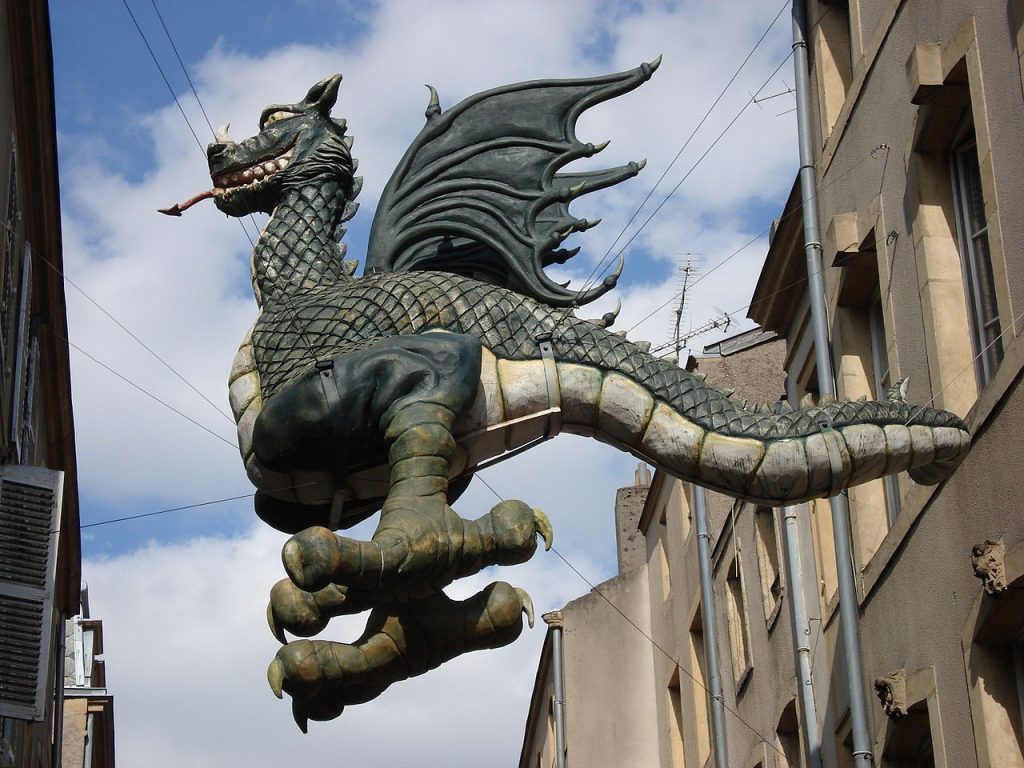
Dragons are usually shown in modern times with a body like a giant lizard or a snake with two pairs of lizard-type legs and able to emit fire from their mouths. The European Dragon has bat-like wings growing from its back. A dragon-like creature with wings but only a single pair of legs is known as a ‘wyvern’.
So it looks like the Dragon of European variety is a sea serpent with wings, which changed to a lizard creature living in caves over time?
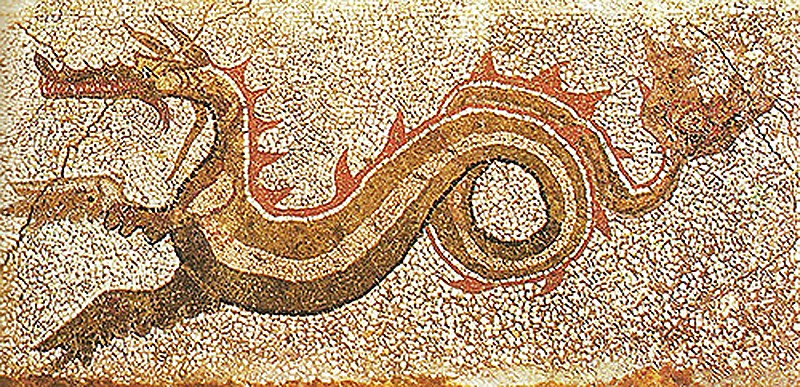
In Ancient Greece, the first mention of a ‘dragon’ is derived from the Iliad, where Agamemnon is described as having a blue dragon motif on his sword belt and an emblem of a three-headed dragon on his breastplate. In 217 AD, Flavius Philostratus discussed dragons in India in ‘The Life of Apollonius of Tyana’ (II,17 and III,6–8) where it mentions (III,7) that “In most respects, the tusks resemble the largest swine, but they are slighter in build and twisted, and have a point as unbraided as sharks’ teeth.”
European dragons exist in folklore and mythology among the overlapping cultures of Europe. Dragons are generally depicted as living in rivers or having an underground lair or cave. They are commonly described as having hard, or armoured hide and are rarely described as flying, despite being depicted with wings. European dragons are usually represented as malevolent under Christianity; pre-Christian dragons, such as Y Ddraig Goch, the Red Dragon of Wales, are also seen as benevolent.
Slavic, Romanian, Polish and Belarusian mythology uses the word ‘snake’ to describe dragons. These words are masculine forms of the Slavic word for ‘snake’, which are typically feminine (like Russian Zmeya). In Romania, there is a similar figure derived from the Slavic Dragon and named Zmeu. Exclusively in Polish and Belarusian folklore and the other Slavic folklore, a dragon is also called smoke.
Russian dragons usually have heads in multiples of three. Some have heads that grow back if every single head isn’t cut off. In Ukraine and Russia, a particular dragon-like creature, Zmey Gorynych, has three heads and spits fire. Other Russian dragons (such as Tugarin Zmeyevich) have Turkic names, probably symbolising the Mongols and other nomadic steppe peoples. Accordingly, St George (illustrating Christianity) killing the dragon (symbolising Satan) is represented on the coat of arms of Moscow. Some prehistoric structures, notably the serpent’s wall near Kiev, have been associated with dragons. (Mythological Dragons – a non-existent animal that is shared by the World)
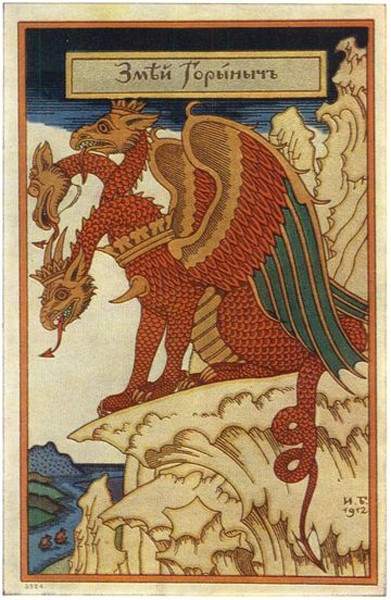
In Jewish religious texts, the first mention of a dragon-like creature is in the Biblical works of Job (26:13), and Isaiah (27:1), where it is called Nachash Bare’ach, or a ‘Pole Serpent’. This is identified in the Midrash Rabba to Genesis 1:21 as Leviathan from the word Taninim “, and God created the great sea-monsters.” In Modern Hebrew, the term Taninim is now used for Crocodiles, but this is a 20th-century usage unconnected with the original biblical meaning.
In Biblical texts, the Book of Isaiah, the Book of Job, and Psalm 89 refer to Rahab’s seademon. Isaiah 51:9 equates this Rahab with a dragon or monster. ‘Rahab’ is the English transliteration with several meanings: pride, a mythical sea monster, or Egypt (as an emblematic name).
In Jewish astronomy, this creature is also identified with the North Pole, the star Thuban, which, around 4,500 years ago, was the star in the Draco constellations’ tail.’ However, this can also have been either the celestial pole or the ecliptic pole. The ancient observers noted that Draco was at the top of the celestial pole, giving stars ‘hanging’ from it. (Mythological Dragons – a non-existent animal that is shared by the World)
The Asian Continent
In India, the early Vedic religion, Vritra, was an Asura and also a ‘naga’ (serpent or possibly dragon-like creature), the personification of drought and enemy of Indra. Vritra was also known in the Vedas as Ahi (snake), and he is said to have had three heads. ‘The Life of Apollonius of Tyana’ by Flavius Philostratus contains a detailed description of India heavily infested with dragons.
Aži Dahāka is the source of the modern Persian word meaning ‘dragon’, often used as a dragon depicted upon a war banner. The Persians believed that a dragon’s baby would be the same colour as the mother’s eyes. In Middle Persian, he is called Dahāg or Bēvar-Asp, the latter meaning ‘he who has 10,000 horses.’ Several other dragons and dragon-like creatures, all of them malevolent, are mentioned in Zoroastrian scripture.
In East Asia, the concept of the dragon appears mainly in the form of a Long, a beneficent dragon-like creature from Chinese’s folklore. Another dragon-like creature that appears in Naga, which is prevalent in some Southeast Asian countries with more direct influence from Vedic religion, will be described mainly in the article Naga. In China, depiction of the dragon can be found in artefacts from the Shang and Zhou dynasties, with examples dating back to the 16th century BC. Archaeologist Zhōu Chong-Fa believes that the Chinese word for dragon is ‘onomatopoeia’ (sounds like) of the sound of thunder. (Mythological Dragons – a non-existent animal that is shared by the World)
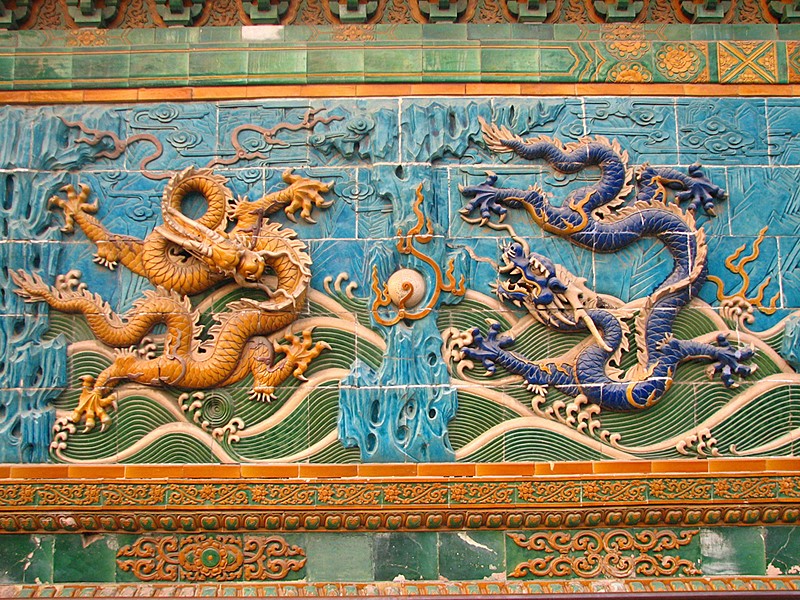
The Chinese Dragon is the highest-ranking animal in the Chinese animal hierarchy, strongly associated at one time with the emperor and hence power and majesty (the mythical bird Fenghuang was the symbol of the Chinese empress), still recognised and revered. Its origins are vague, but its ancestors can be found on Neolithic pottery and Bronze Age ritual vessels. Tradition comprises nine different animals, with nine sons, each with its imagery and affiliations.
Japanese dragon myths amalgamate native legends with imported stories about dragons from China, Korea and India. Like these other Asian dragons, most Japanese ones are water deities associated with rainfall and bodies of water and are typically depicted as large, wingless, serpentine creatures with clawed feet. Gould writes (1896:248), the Japanese Dragon is “invariably figured as possessing three claws.”
Vietnamese dragons are symbolic creatures in the folklore and mythology of Vietnam. According to an ancient creation myth, the Vietnamese people are descended from a dragon and a fairy. To Vietnamese people, the dragon brings rain, essential for agriculture. It represents the emperor, the prosperity and the power of the nation. Like the Chinese Dragon, the Vietnamese dragon symbolises yang, representing the universe, life, existence, and growth. Extant references to the Vietnamese dragon are rare now due to the fierce changes in history that accompanied the sinicisation of the Nguyn Dynasty. (Mythological Dragons – a non-existent animal that is shared by the World)
Central American Dragons
The Americas have their very own dragon. These are depicted as feathered serpents with no legs. Sometimes they have feathered wings; others do not. They come in all colours, from blue to red. They are much like overgrown snakes and even have forked tongues.
In the Americas, the gods are often depicted as dragons or serpentine creatures. Quetzalcoatl is the Aztec God of wisdom and religion. Toltecs, Mayans and other mesoamerican tribes and cultures also worshipped him. His very name means feathered serpent, and he is often depicted as a great feathered serpent. He is also the God of the winds, and his dragon form allows him to move freely with the wind. (Mythological Dragons – a non-existent animal that is shared by the World)
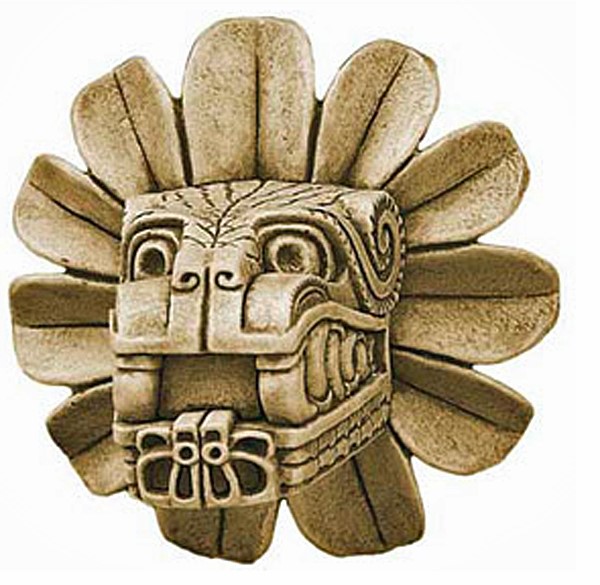
The Olmec tribe of Mesoamerica were the first to create carvings and images of a feathered serpent in the Americas, and soon most tribes from the Northern USA to the bottom of the Andes in South America were using dragons in their artwork. Deifying them soon followed.
American dragons are often gods of wind and water. Being fast-moving themselves, it only seems fitting that they should be the deities of something just as fast-paced. The indigenous peoples often sacrificed to the gods, and the dragons were some of the most important. When something of a suitable nature occurred, such as a good harvest, the tribes thanked them with sacrifices and festivals.
The more settled empires of the Aztecs, Mayans, and Incas and others saw the dragon as the most powerful being alive. Some saw the sun as a great golden god, giving light to the people below. Others saw the dragon as the one who swallowed the sun at dusk and spat it back out at dawn. They believed that if the dragons did not do this, there would be no night, and the people would not sleep. If the people did not sleep, they would be too tired to work, and the tribe would soon vanish. The dragons are responsible for allowing us to sleep, according to these people.
The worship of a feathered serpent deity is first documented in Teotihuacan in the first century BCE or first century CE. That period lies within the Late Preclassic to Early Classic period (400 BCE – 600 BCE) of Mesoamerican chronology, and veneration of the figure appears to have spread throughout Mesoamerica by the Late Classic (600–900 AD).
In the Postclassical period (900–1519 AD), the worship of the feathered serpent deity was based in the primary Mexican religious centre of Cholula. In this period, the deity is known to have been named ‘Quetzalcoatl’ by his Nahua followers. In the Maya area, he was approximately equivalent to Kukulcan and Gukumatz, names who also roughly translate as ‘feathered serpent’ in different Mayan languages. (Mythological Dragons – a non-existent animal that is shared by the World)
In the era following the 16th-century Spanish Conquest, several sources were written that conflate Quetzalcoatl with Ce Acatl Topiltzin, a ruler of the mythic-historic city of Tollan. It is a matter of much debate among historians to which degree or whether these narratives about this legendary Toltec ruler describe historical events. Furthermore, early Spanish sources written by clerics tend to identify the god-ruler Quetzalcoatl of these narratives with either Hernán Cortés or St. Thomas—an identification that is also a source of diversity of opinions the nature of Quetzalcoatl.
Among the Aztecs, whose beliefs are the best-documented in the historical sources, Quetzalcoatl was related to gods of the wind, of Venus, of the dawn, of merchants and arts, crafts and knowledge. He was also the patron god of the Aztec priesthood, learning and understanding. Quetzalcoatl was one of the several important gods in the Aztec pantheon, along with the gods Tlaloc, Tezcatlipoca and Huitzilopochtli.
A feathered serpent deity has been worshiped by many different ethnopolitical groups in Mesoamerican history. The existence of such worship can be seen through studies of the iconography of different Mesoamerican cultures, in which serpent motifs are frequent. Based on the various symbolic systems used in portrayals of the feathered serpent deity in different cultures and periods, scholars have interpreted the religious and symbolic meaning of the feathered serpent deity in Mesoamerican cultures.
The earliest iconographic depiction of the deity is believed to be found on Stela 19 at the Olmec site of La Venta, depicting a serpent rising behind a person probably engaged in a shamanist ritual. This depiction is believed to have been made around 900 BC. Although probably not exactly a definition of the same feathered serpent deity worshipped in classic and post-classic periods, it shows the continuity of symbolism of feathered snakes in Mesoamerica from the formative period and on, for example, compared to the Mayan Vision Serpent shown below.
The first culture to use the symbol of a feathered serpent as an important religious and political symbol was Teotihuacan. At temples such as the aptly named ‘Quetzalcoatl temple’ in the Ciudadela complex, feathered serpents figure prominently and alternate with a different kind of serpent head. The earliest depictions of the feathered serpent deity were fully zoomorphic, depicting the serpent as an actual snake, but already among the Classic Maya, the God began acquiring human features.
In the iconography of the classic period, Maya’s serpent imagery is also prevalent: a snake is often seen as the embodiment of the sky itself, and a vision serpent is a shamanist helper presenting Maya’s kings with visions of the underworld.
The archaeological record shows that after the fall of Teotihuacan that marked the beginning of the epi-classic period in Mesoamerican chronology around 600 AD, the cult of the feathered serpent spread to the new religious and political centres in central Mexico, centres such as Xochicalco, Cacaxtla and Cholula. Feathered serpent iconography is prominent at all of these sites. Cholula is known to have remained the most important centre of worship to Quetzalcoatl, the Aztec/Nahua version of the feathered serpent deity, in the post-classic period.
In the post-classic Nahua civilisation of central Mexico (Aztec), the worship of Quetzalcoatl was ubiquitous. The most important centre was Cholula, where the World’s largest pyramid was dedicated to his worship. In Aztec culture, depictions of Quetzalcoatl were fully anthropomorphic. Quetzalcoatl was associated with the wind god Ehecatl and is often depicted with his insignia: a beak-like mask.
To the Aztecs, Quetzalcoatl was, as his name indicates, a feathered serpent, a flying reptile (much like a dragon), who was a boundary-maker (and transgressor) between Earth and sky. He was a creator deity, having contributed essentially to the creation of humanity. He also had anthropomorphic forms, for example, in his aspects as Ehecatl, the wind god. Among the Aztecs, the name Quetzalcoatl was also a priestly title, as the two most important priests of the Aztec Temple Mayor were called ‘Quetzalcoatl Tlamacazqui.’ In the Aztec ritual calendar, different deities were associated with the cycle-of-year names: Quetzalcoatl was tied to the year Ce Acatl (One Reed), which correlates to the year 1519. (Mythological Dragons – a non-existent animal that is shared by the World)
African Dragons
According to a collection of books by Claudius Aelianus called ‘On Animals,’ Ethiopia was inhabited by a dragon species that hunted elephants. It could grow to a length of 180 feet and had a lifespan rivalling that of the most enduring of animals.
African dragons are one of the types of dragons that are not as well known as the European Dragon or the Oriental Dragon. In fact, most of these dragons are not even recognised or thought of as dragons. Most African dragons are more like large serpents or giant snakes, sometimes possessing only two legs if any at all. These serpent-like dragons were seen several times throughout African culture, including folklore, religion, mythology and tribal stories. These dragon’s stories were found in tribes, cities and towns all over Africa, including Egypt. (Mythological Dragons – a non-existent animal that is shared by the World)
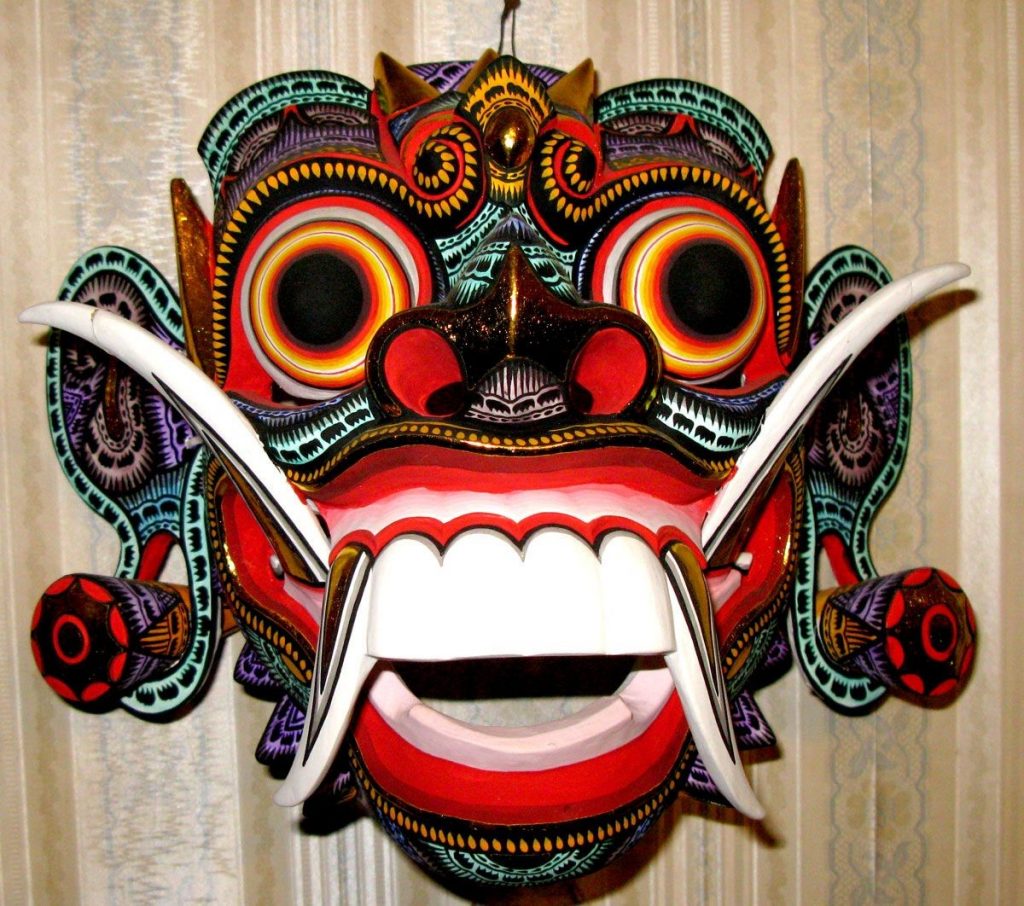
Throughout the African’s and Egyptian’s lives, they were told of dragons. For the Ancient Egyptians, they gave thanks and praise to Ra for successfully bringing the sun back into the sky after fighting with Apep, a serpent-like dragon God who struggled to take Ra’s life and rule the Egyptian Gods. There are many stories like this. The Africans are constantly reminded about the monstrous creatures. It is also said that the Dragon, Aido-Hwedo, will destroy the World that it created.
The African Dragon differentiates itself from its European and Eastern counterparts in many aspects. The size is the first thing. They are 10.7 metres (35 feet) in length. The majority were serpentine, like the American Dragons, but they all had legs. There was a variety in the number of legs, but mainly two and four. It was said that only those with four legs could fly, whereas the two-legged varieties were floor-bound. The colour of African Dragons varied from green to gold, and some even had scales of all shades between. (Mythological Dragons – a non-existent animal that is shared by the World)
So we can see that the dragon stories are varied depending on which continent and country you are observing this creature. So, are they real?
So let’s look at the facts by continent:
European Dragons:
• Link going back to 2 000 BCE
• Winged
• Serpent / Snakelike
• Living in the sea/river later water underground lairs/caves
• Single pair of legs and flight
• Three Headed
• Serpent headed changing to lizard over time
African Dragons
• Serpents / Snakes Like
• Four Legs – no flight
• Two legs – with flight
Asian Dragons
• Dated from 1 600 BCE
• Sounds like thunder
• Associated with Water
• Clawed three Feet
• Brings rain
Central American Dragons
• Feathered
• Folk tongues
• Serpent Headed
• Linked to the wind and water
• Dated from 900 BCE
• Snake is seen as the ’embodiment’ of the sky
As there is a lack of consistency, they are probably a myth! And this can be confirmed by the only scientific fact we know – no bones have ever been found, let alone a skeleton!
We have found bones of dinosaurs, which are millions of years old and before mankind existed on this planet, but we have never seen any bones of a Dragon which lived in modern times – but that does not mean they are not real – it means they are not animals!!
Further investigation shows that the stories of the dragon do have common elements contained in all these myths. Most island stories from Britain, Japan, and Vietnam talk of ‘giant sea serpents’ bringing wind, rain, and fire. Whilst land-based stores from China, Central America and Europe talk about giant’ snakes.’
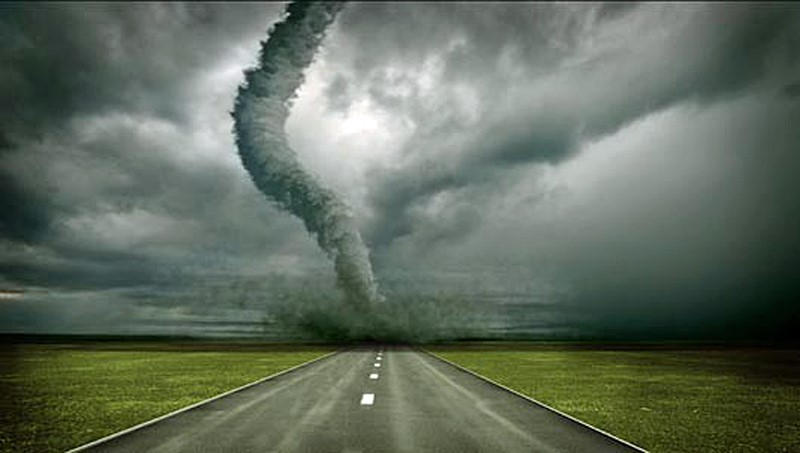
So from this general description, can we find a common phenomenon that at sea looks like a ‘Sea Monster’, but on land looks like a ‘Giant Snake’?
The apparent natural phenomenon that we understand today, which is similar but would have caused our ancestors great problems of comprehension, is the ‘tornado’.
A tornado is a violently rotating column of air in contact with both the surface of the Earth and a cumulonimbus cloud or, in rare cases, the base of a cumulus cloud. They are often referred to as twisters or cyclones, although the word cyclone is used in meteorology, in a broader sense, to name any closed low pressure circulation.
Tornadoes come in many shapes and sizes, but they are typically in the form of a visible condensation funnel, whose narrow end touches the Earth and is often encircled by a cloud of debris and dust. Most tornadoes have wind speeds less than 110 miles per hour (177 km/h), are about 250 feet (76 m) across, and travel a few miles (several kilometres) before dissipating. The most extreme tornadoes can attain wind speeds of more than 300 miles per hour (483 km/h), stretch more than two miles (3.2 km) across, and stay on the ground for dozens of miles (more than 100 km).
Various types of tornadoes include the landspout, multiple vortex tornado, and waterspout. Waterspouts are characterised by a spiralling funnel-shaped wind current connecting to a large cumulus or cumulonimbus cloud. They are generally classified as non-super cellular tornadoes that develop over bodies of water, but there is disagreement over whether to classify them as actual tornadoes. These spiralling columns of air frequently form in tropical areas close to the equator and are less common at high latitudes. Other tornado-like phenomena in nature include the gustnado, dust devil, fire whirls, and steam devil; downbursts are frequently confused with tornadoes, though their action is dissimilar. (Mythological Dragons – a non-existent animal that is shared by the World)
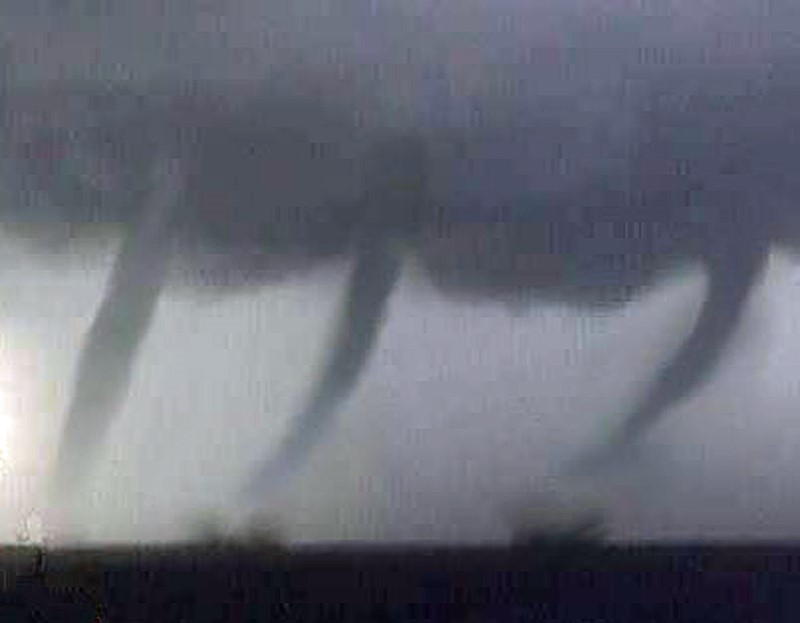
Tornadoes have been observed on every continent except Antarctica. However, the vast majority of tornadoes occur in the Tornado Alley region of the United States, although they can occur nearly anywhere in North America. They also occasionally occur in south-central and eastern Asia, northern and east-central South America, Southern Africa, North Western and southeast Europe, western and south-eastern Australia, and New Zealand.
On the sea, the tornado would approach island nations as a gigantic water vortex appearing either out of nowhere or from a distance. These vortexes are of infinite power and would roar with thunder like a great monster. The top of the vortex would wobble like a great head in the clouds, and thunder would crash around the edges of the water spout like fire. If you were to describe this event to someone without knowing weather storms, you know today, would you not also describe it as a ‘great fire-breathing monster that roars with anger and destroys all in its path. Especially when the unusual event sometimes appears and then disappears without a trace?
But lighting and thunder can also be heard and seen without the long hear of the tornado, is the fire-breathing aspect based on another associated phenomenon?
Fire whirls, also known as fire devils, fire tornadoes or firenadoes, are whirlwinds of flame that may occur when intense heat and turbulent wind conditions combine to form whirling eddies of air. These eddies can tighten into a tornado-like structure that sucks in burning debris and combustible gases.
These types of Tornadoes have a fire has their heads and looks as if a long flame of fire is raining down from the tornado as we would imagine if someone was describing a fire-breathing creature.
A fire tornado consists of a core—the part that is actually on fire—and an invisible pocket of rotating air that feeds fresh oxygen to the body. The core of a typical fire tornado is 1 to 3 feet (0.30 to 0.91 m) wide and 50 to 100 feet (15 to 30 m) tall. Under the right conditions, significant fire tornadoes— several tens of feet wide and more than 1,000 feet (300 m) tall—can form. The temperature inside the core of a fire tornado can reach up to 2,000 °F (1,090 °C)—hot enough to potentially reignite ashes sucked up from the ground. Often, fire tornadoes are created when a wildfire or firestorm creates its wind, which can turn into a spinning vortex of flame.
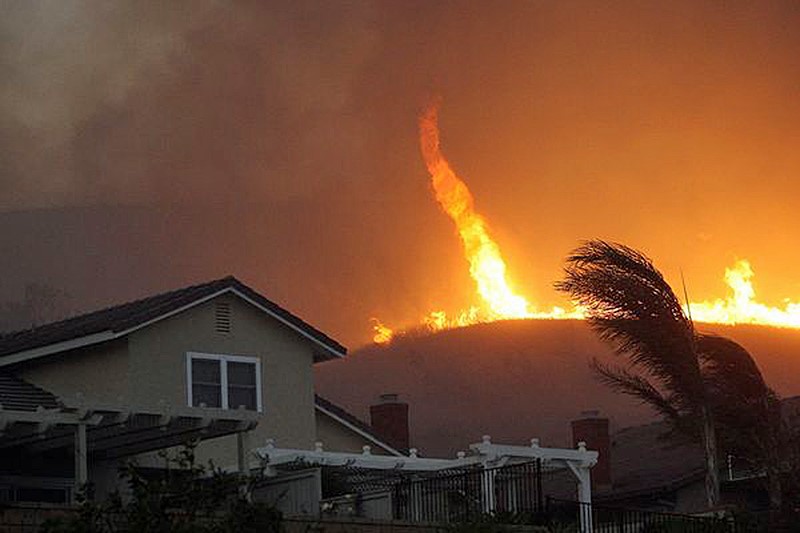
Combustible, carbon-rich gases released by burning vegetation on the ground are fuel for most fire tornadoes. When sucked up by a whirl of air, this unburned gas travels up the core until it reaches a region with enough fresh, heated oxygen to set it ablaze. This causes the tall and skinny appearance of a fire tornado’s core.
Real-world fire whirls usually move pretty slowly. Fire tornadoes can set objects in their paths ablaze and can hurl burning debris out into their surroundings. The winds generated by a fire tornado can also be dangerous. Large fire tornadoes can create wind speeds of more than 100 miles per hour (160 km/h)— strong enough to knock down trees.
In history, tornadoes have had devastating effects on man – to illustrate how and why the stories of Dragons exist in the psyche, here are some examples, which will leave you in no doubt why the legends have lasted thousands of years.
In Deadly Earthquake, Echoes of 1923
The earthquake hit in the early afternoon off the coast of Honshu, Japan’s most populous island, triggering unprecedented destruction. Ninety per cent of the houses in a score of seaside towns collapsed in seconds. Passenger trains fell off railway bridges and plunged into the sea. A few minutes later, a 35-foot-high tsunami rolled in, sweeping away cars, houses and thousands of people and burying entire towns in mud. Then came fires, fanned by winds and fuelled by flimsy wooden houses, reducing much of what remained to ashes.
The date was Sept. 1, 1923, and the event was the Great Kanto Earthquake, the worst calamity in Japan’s history. Largely forgotten, even by most Japanese, the quake levelled the great port city of Yokohama — home to a population of 5,000 expatriates — and burned down more than sixty per cent of Tokyo. All told, 145,000 people died, including about 150 Americans and some 40,000, primarily poor Japanese, who were incinerated by a ‘dragon twist’ a freak tornado of fire that swept over a makeshift campground near Tokyo’s Sumida River.
However, these exceptional firestorms are limited to just a few areas of the World and are not typical! Moreover, the dates show that this myth travelled the World when history tells us that the peoples of the World were isolated from each other.
But is this true?
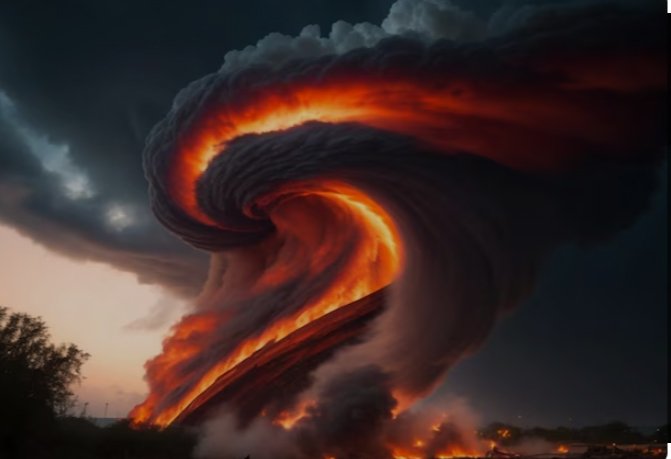
For to associate Tornadoes with a single creature (either snake or serpent) would be impossible unless it was spread by word of mouth (especially the fire-breathing aspect!), so it can only lead us to conclude that worldwide travel was available thousands of years before history currently accepts.
We are left with a simple solution to the dragon myth, they exist in the form of tornadoes and firestorms and that ancient man travelled for thousands of years around all four continents of the World, spreading the story of how this mythical creature, the dragon – who lives within this violent vortex.
For more information about Mythological dragons and our strange past click HERE or visit our Video channel HERE.
Further Reading
For information about British Prehistory, visit www.prehistoric-britain.co.uk for the most extensive archaeology blogs and investigations collection, including modern LiDAR reports. This site also includes extracts and articles from the Robert John Langdon Trilogy about Britain in the Prehistoric period, including titles such as The Stonehenge Enigma, Dawn of the Lost Civilisation and the ultimate proof of Post Glacial Flooding and the landscape we see today.
Robert John Langdon has also created a YouTube web channel with over 100 investigations and video documentaries to support his classic trilogy (Prehistoric Britain). He has also released a collection of strange coincidences that he calls ‘13 Things that Don’t Make Sense in History’ and his recent discovery of a lost Stone Avenue at Avebury in Wiltshire called ‘Silbury Avenue – the Lost Stone Avenue’.
Langdon has also produced a series of ‘shorts’, which are extracts from his main body of books:
For active discussions on the findings of the TRILOGY and recent LiDAR investigations that are published on our WEBSITE, you can join our and leave a message or join the debate on our Facebook Group.

